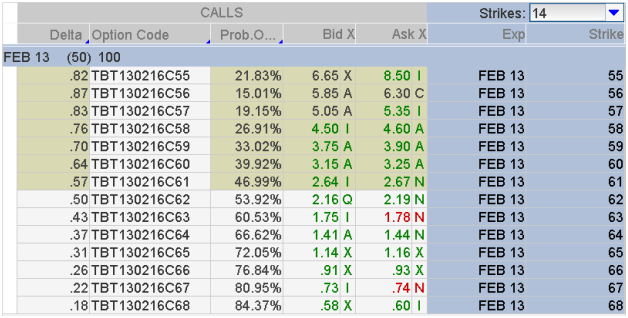Last week in the Daily Profit I discussed what I thought would be the “Trade of the Decade.”
Admittedly my assumption, like anyone attempting to prognosticate the future of the market, carries no guarantee. I always know that my “guess” is no better than anyone else’s “guess.” But that should never stop us, as self-directed investors, from making an assumption and wrapping an options strategy around it.
Within the article linked above, I discussed how I thought bonds prices would take a nose dive over the course of the next decade.
Why?
The global financial system is in dire straits. Debt burdens are at epic proportions on every level – global, national, state and local. Indeed, resuscitation looks doubtful.
In my view, one can't ignore the current failures that are the direct result of the “prosperity boom” that began in the 1980s and came on the backs of ever-expanding credit and debt. Advanced economies are witnessing the damage of the flawed theory firsthand.
But no matter what my thought is on bonds, I just want to use my directional assumption as a potential lesson on how I use covered calls.
What do you need to initiate the strategy? One-hundred shares of stock and a liquid options market. By liquid, I mean options that are more heavily traded and that have narrow bid-ask spreads.
If you own at least 100 shares of stock, then you have the ability to “sell a call” against your stock (assuming it has options, which most do).
Remember, 100 shares of stock = 1 option contract.
When is the preferred time to implement the strategy? In general, you want to sell covered calls when the implied volatility of your underlying asset is higher than the historical norm. That means that option premiums are generally rich, which generates a higher-than-normal return on the proceeds of the call.
Now let’s create the scenario.
You recently purchased 500 shares of ProShares UltraShort 20+ Year Treasury (NYSE: TBT) for $61.50 with no intention of selling the ETF anytime soon – it’s a long-term investment.
TBT has experienced a sharp pullback over the years, so implied volatility – and thus, option premium – is higher than normal.
As a result, you wish to take advantage of the increased options prices by selling a few covered calls, thereby reducing your long-term cost basis … which is the ultimate goal of a covered-call options strategy.
Again, your average purchase price is $61.50. With an implied volatility of approximately 26%, you can go out to the 67 strike, have an 80.95% chance of success on the trade and bring in $73 per 100 shares.

What does that mean?
It means that every 50 days you are able to potentially collect $365 against 500 shares of TBT. Annually that equates to approximately $2,555 of income, but more importantly it lowers the long-term cost basis to $56.39 a share, or 8.3%. Not bad.
The above scenario is a more conservative approach. Six strikes out in TBT offers an 80% chance of success (i.e., the option will expire out of the money, or worthless), so you should expect that not every month will be successful. But that’s okay. Remember, you are going to own this stock for the long term. Any reduction of your cost basis is a step in the right direction.
However, some options professionals prefer to sell at around the 68% success interval. If you sell two strikes lower at the 65 strike, you still have a 72.05% chance of success on the trade. But more importantly, you can bring in $114 per 100 shares. Of course, the probability of the call expiring out of the money is lower. But if you are more confident in your assumption, you can collect $570 against your 500 shares, or $3,990 over the course of a year. This would lower your cost basis to $53.52.
Another way professionals use covered calls when taking on a lower probability of success is to sell only three contracts against their 500 shares. This allows them to stay longer than if they sold against all of their shares. Again, it depends on your assumptions at the time of the trade.
Try out various scenarios using the chart above. Take the example and plug in other stocks. If you own stock for the long haul, covered calls is THE strategy. It doesn’t cost you a thing, so why not bring in some income while simultaneously lowering your cost basis.
I hope this helps a few of you in your long-term endeavors.
And as always, please do not hesitate to email me with any questions or comments at andy.crowder@wyattresearch.com.
Kindest,
Andy Crowder
Editor and Chief Options Strategist
 Facebook
Facebook
 Twitter
Twitter